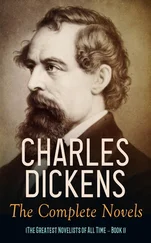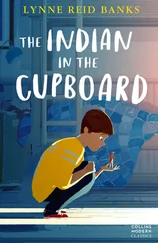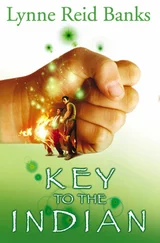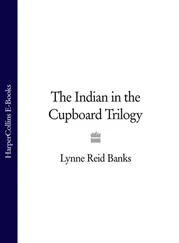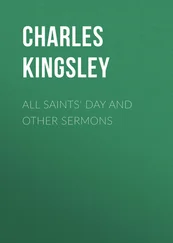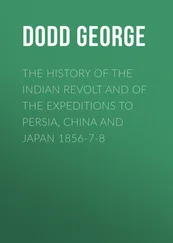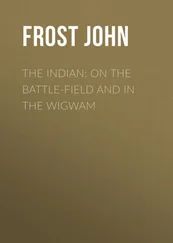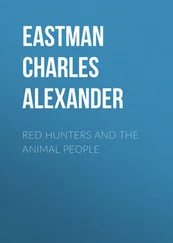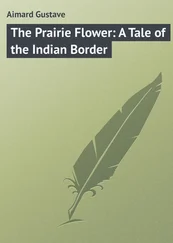Charles Eastman - The Indian To-day
Здесь есть возможность читать онлайн «Charles Eastman - The Indian To-day» — ознакомительный отрывок электронной книги совершенно бесплатно, а после прочтения отрывка купить полную версию. В некоторых случаях можно слушать аудио, скачать через торрент в формате fb2 и присутствует краткое содержание. Жанр: foreign_antique, foreign_prose, на английском языке. Описание произведения, (предисловие) а так же отзывы посетителей доступны на портале библиотеки ЛибКат.
- Название:The Indian To-day
- Автор:
- Жанр:
- Год:неизвестен
- ISBN:нет данных
- Рейтинг книги:3 / 5. Голосов: 1
-
Избранное:Добавить в избранное
- Отзывы:
-
Ваша оценка:
- 60
- 1
- 2
- 3
- 4
- 5
The Indian To-day: краткое содержание, описание и аннотация
Предлагаем к чтению аннотацию, описание, краткое содержание или предисловие (зависит от того, что написал сам автор книги «The Indian To-day»). Если вы не нашли необходимую информацию о книге — напишите в комментариях, мы постараемся отыскать её.
The Indian To-day — читать онлайн ознакомительный отрывок
Ниже представлен текст книги, разбитый по страницам. Система сохранения места последней прочитанной страницы, позволяет с удобством читать онлайн бесплатно книгу «The Indian To-day», без необходимости каждый раз заново искать на чём Вы остановились. Поставьте закладку, и сможете в любой момент перейти на страницу, на которой закончили чтение.
Интервал:
Закладка:
Charles Alexander Eastman
The Indian To-day / The Past and Future of the First American
BIOGRAPHICAL NOTE
The author of this book was born in a teepee of buffalo hide near Redwood Falls, Minn., during the winter of 1858. His father was a full-blooded Sioux called "Many Lightnings," (Tawakanhdeota). His mother, the granddaughter of Chief "Cloud Man" of the Sioux and daughter of a well-known army officer, died shortly after his birth. He was named Ohiyesa (The Winner).
The baby was reared to boyhood by the care of his grandmother. When he was four years old, the so-called "Minnesota massacre" of 1862 separated him from his father and elder brothers and only sister, and drove him with a remnant of the eastern Sioux into exile in Manitoba. There for over ten years he lived the original nomadic life of his people in the family of an uncle, from whom he received the Spartan training of an Indian youth of that day. The knowledge thus gained of life's realities and the secrets of nature, as well as of the idealistic philosophy of the Indian, he has always regarded as a most valuable part of his education.
When Ohiyesa had reached the age of fifteen years, and had been presented with a flint-lock musket in token of his arrival at the estate of young manhood, he was astonished by the reappearance of the father whose supposed death at the hands of white men he had been taught that he must some day avenge. He learned that this father had adopted the religion and customs of the hated race, and was come to take home his youngest son.
Ohiyesa's new home was a pioneer log cabin on a farm at Flandreau, Dakota Territory, where a small group of progressive Indians had taken up homesteads like white men and were earning an independent livelihood. His long hair was cropped, he was put into a suit of citizen's clothing and sent off to a mission day school. At first reluctant, he soon became interested, and two years later voluntarily walked 150 miles to attend a larger and better school at Santee, Neb., where he made rapid progress under the veteran missionary educator, Dr. Alfred L. Riggs, and was soon advanced to the preparatory department of Beloit College, Wisconsin. His father had adopted his wife's English name of Eastman, and the boy named himself Charles Alexander.
After two years at Beloit, young Eastman went on to Knox College, Ill.; then east to Kimball Union Academy in New Hampshire, and to Dartmouth College, where Indians had found a special welcome since colonial days. He was graduated from Dartmouth in 1887, and went immediately to Boston University, where he took the medical course, and was graduated in 1890 as orator of his class. The entire time spent in primary, preparatory, college, and professional education, including the mastery of the English language, was seventeen years, or about two years less than is required by the average white youth.
Doctor Eastman went directly to the large Pine Ridge reservation in South Dakota as Government physician; and during the "Ghost dance" troubles of 1890-91 he was in charge of the wounded Indian prisoners in their emergency hospital. In 1891 he married Miss Elaine Goodale of Berkshire County, Mass.; and in 1893 went to St. Paul, Minn., with his wife and child. While engaged there in the practice of medicine he was approached by a representative of the International Committee of the Y. M. C. A., and served for three years as their field secretary in the United States and Canada.
In 1897 Dr. Eastman went to Washington as attorney for his tribe, to push their interests at the national capital, and from 1899 to 1902 he served again as a Government physician to the Sioux. Beginning in 1903, he spent about seven years giving permanent family names to the Sioux, and thus helping to establish the legal descent of their property, under the direction of the Indian Bureau.
His first book, "Indian Boyhood," was published in 1902. It is the story of his own early life in the wilds of Canada, and was the outgrowth of several sketches which appeared in St. Nicholas a few years earlier. Since that time he has written "Red Hunters and the Animal People" (1904), "Old Indian Days" (1906), "Wigwam Evenings" (1909), "The Soul of the Indian" (1911), and "Indian Scout Talks" (1914). All have been successful, and some have been brought out in school editions, and translated into French, German, Danish, and Bohemian. He has also contributed numerous articles to magazines, reviews, and encyclopedias.
In connection with his writings he has been in steady demand as a lecturer and public speaker for the past twelve years, and has recently devoted his entire time to literary work and lecturing, with the purpose of interpreting his race to the present age.
When the first Universal Races Congress was held in the city of London in 1911, Dr. Eastman was chosen to represent the American Indian at that historic gathering. He is generally recognized as the foremost man of his race to-day, and as an authority on the history, customs, and traditions of the native Americans.
CHAPTER I
THE INDIAN AS HE WAS
It is the aim of this book to set forth the present status and outlook of the North American Indian. In one sense his is a "vanishing race." In another and an equally true sense it is a thoroughly progressive one, increasing in numbers and vitality, and awakening to the demands of a new life. It is time to ask: What is his national asset? What position does he fill in the body politic? What does he contribute, if anything, to the essential resources of the American nation?
In order to answer these questions, we ought, first, to consider fairly his native environment, temperament, training, and ability in his own lines, before he resigned himself to the inevitable and made up his mind to enter fully into membership in this great and composite nation. If we can see him as he was, we shall be the better able to see him as he is, and by the worth of his native excellence measure his contribution to the common stock.
In the first place, he is free born, hence a free thinker. His government is a pure democracy, based solidly upon intrinsic right and justice, which governs, in his conception, the play of life. I use the word "play" rather than a more pretentious term, as better expressing the trend of his philosophy. He stands naked and upright, both literally and symbolically, before his "Great Mystery." When he fails in obedience either to natural law (which is supreme law), or to the simple code of his brother man, he will not excuse himself upon a technicality or lie to save his miserable body. He comes to trial and punishment, even to death, if need be, unattended, and as cheerfully as to a council or feast.
As a free man himself, he allows others the same freedom. With him the spiritual life is paramount, and all material things are only means to the end of its ultimate perfection. Daily he meets the "Great Mystery" at morning and evening from the highest hilltop in the region of his home. His attitude toward Deity is simple and childlike.
Social life is kept as simple as possible, freedom of action only curbed by reverence for Those Above, and respect for the purity and perfection of his own body and those of his fellow-creatures. Only such laws are made as have been found necessary to guard personal and tribal purity and honor. The women do not associate freely with men outside of the family, and even within it strict decorum is observed between grown brothers and sisters. Birth and marriage are guarded with a peculiar sacredness as mysterious events. Strenuous out-of-door life and the discipline of war subdue the physical appetites of the men, and self-control is regarded as a religious duty. Among the Sioux it was originally held that children should not be born into a family oftener than once in three years, and no woman was expected to bear more than five children, for whom both masculine and feminine names were provided to indicate the order of their birth.
Читать дальшеИнтервал:
Закладка:
Похожие книги на «The Indian To-day»
Представляем Вашему вниманию похожие книги на «The Indian To-day» списком для выбора. Мы отобрали схожую по названию и смыслу литературу в надежде предоставить читателям больше вариантов отыскать новые, интересные, ещё непрочитанные произведения.
Обсуждение, отзывы о книге «The Indian To-day» и просто собственные мнения читателей. Оставьте ваши комментарии, напишите, что Вы думаете о произведении, его смысле или главных героях. Укажите что конкретно понравилось, а что нет, и почему Вы так считаете.
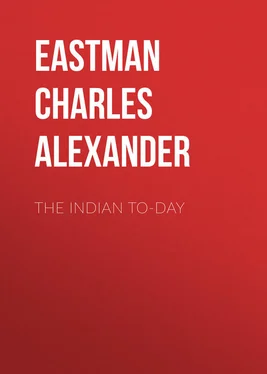
![О Генри - Бабье лето Джонсона Сухого Лога [The Indian Summer of Dry Valley, Johnson]](/books/407344/o-genri-babe-leto-dzhonsona-suhogo-loga-the-india-thumb.webp)
